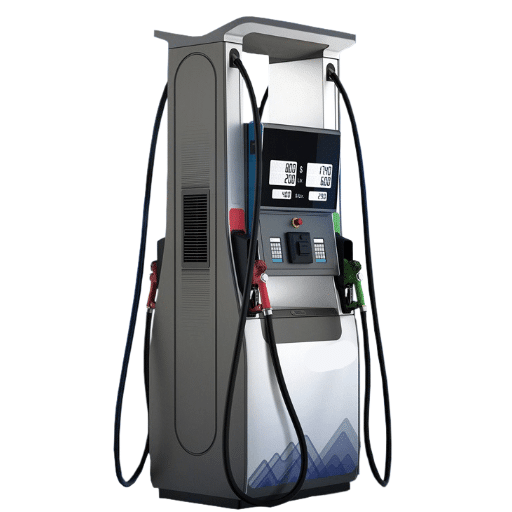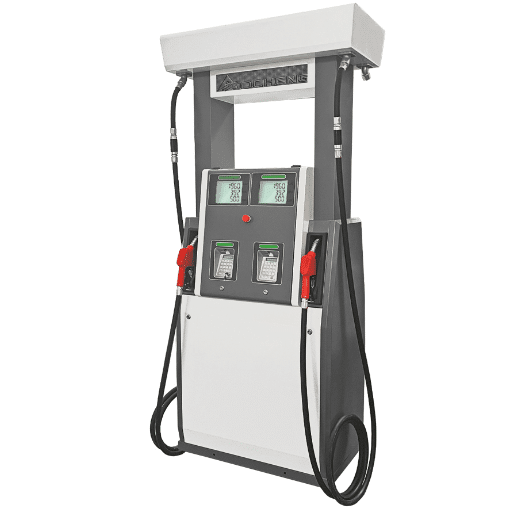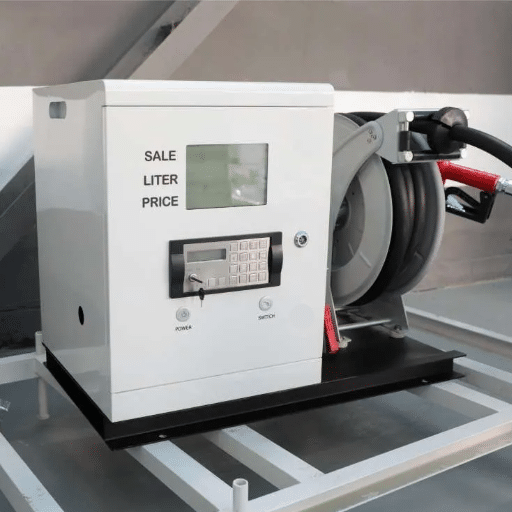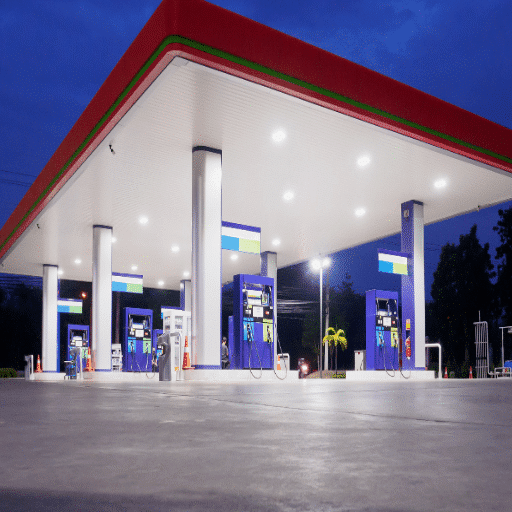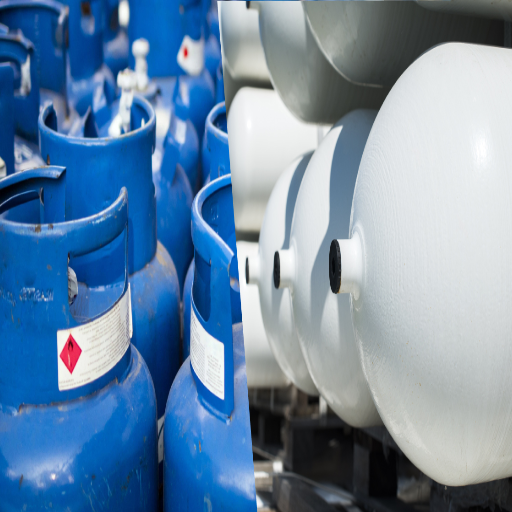The Basics of a Gas Pump
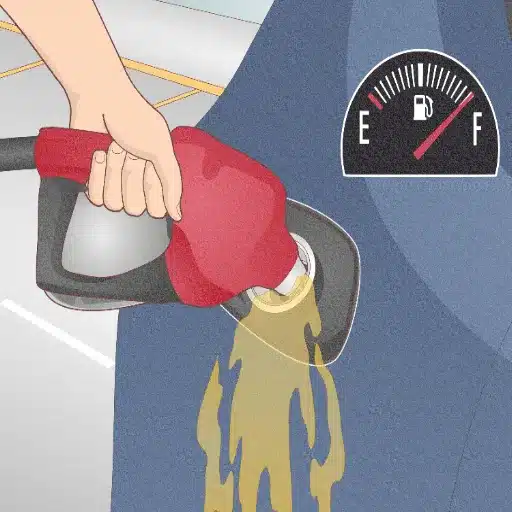
Gas pumps act using a blend of mechanical and electronic components to deliver fuel more efficiently and safely. Lifting the nozzle and fueling selection switches the pump on and makes the gasoline draw through a pipe from an underground storage tank. A motor on a smaller scale powers the pump that transports fuel to the nozzle. The nozzle is fitted with a flow-control mechanism and a sensing mechanism that detects when your tank has achieved its full capacity. The sensor functions on the vacuum created inside the nozzle. The fuel begins to block the airflow and triggers an automatic shut-off to stop fuel flow, thus preventing any overfill.
What is a Gas Pump?
A gas pump, or fuel dispenser, is a device that dispenses gasoline and other liquid fuels into vehicles. It is important for modern gas pumps to have metering devices that tell how much fuel has been dispensed, and the amount owed according to the price of the fuel advertised. Fuel is drawn from underground storage tanks by either a suction or submersible pump with delivery through the nozzle to the vehicle in a timely and safe manner.
1.5 Million+Fuel stations worldwide
2,000 GallonsGasoline is pumped every second in the United States alone
Gas pumps come into their own as technology advances, bringing in a bunch of new features with digital screens, payment options, and multimedia capabilities for better user interaction. Recent technological developments have ushered in many chip readers at stations, NFC payment systems, and even mobile app compatibility to ease payment. Some high-tech systems also include vapor recovery to limit the emission of hazardous vapors during refueling, toward an environmental compliance goal. There are well over 1.5 million fuel stations worldwide, and in the United States alone, by testimony, about 2,000 gallons of gasoline are pumped every second. The extent to which the heights of these figures speak is evidence of the gas pumps as an essential infrastructure in transportation. Also, with the growing acceptance of alternative fuels-Iiquefied Natural Gas (LNG) and charging technology for electric vehicles-gas pumps are going forward to be able to support the energy transition.
Components of a Fuel Pump System
A fuel pump system is an ingenious mechanism comprising several components that work harmoniously to deliver fuel to the vehicle efficiently and safely. Here are the major components of the modern fuel pump system, along with the functions they perform.
Pump Mechanism
This is the heart of the system, moving fuel from storage into the dispenser. Usually, electric pumps are used nowadays because of their capability to provide a constant and steady flow of fuel in the dispenser. The use of submersible pumps for this system is becoming more common as they provide easier maintenance and reduce emissions of fuel vapors.
Flow Meter
The flow meter ensures accuracy in measuring the volume of fuel actually dispensed. Modern flow meters, which incorporate technologies such as positive displacement meters or ultrasonic flow meters, ensure this accuracy. In research, the flow meters in modern gasoline pumps can measure fuel with an accuracy of ±0.25%.
Hoses And Nozzles
Fuel hoses connect the dispenser to the nozzle, ensuring a smooth, uninterrupted pathway for fuel delivery. The nozzles usually contain other safety features as well, such as an automatic shutoff valve, which stops fuel flow when the tank is full, preventing spills. Almost as important are the vapor recovery nozzles in some systems that lessen environmental impact by collecting vapors created during refueling.
Display And Control Panel
Transparency and customer convenience are provided by the display screen showing real-time data such as the volume and cost of fuel dispensed. New-age control panels now also feature touchscreens and digital interfaces for electronic payment, selecting fuel types, and combining selections with biofuels or higher octane.
The Filtration System
Fuel filtration systems help keep the fuel clean by removing practically everything harmful, be it sediment, water, or rust particles. It has been found that good filtration causes less wear to vehicle engines and that the vehicle actually performs well since the engines receive strictly clean fuel.
Safety Sensors and Monitoring System
Sensors in a fuel pump installation track pressure, temperature, flow rates, and any irregularities in operation. Some of these include leak alarms and emergency shutoff systems to enhance safety.
Payment Processing Unit
Modern fuel pump systems now also incorporate payment technology with card readers that support contactless methods such as NFC. Some stations have also developed mobile apps to facilitate quick, cashless transactions. This phenomenon is growing in prominence in response to the worldwide shift toward digital payments in retail industries.
Alternative Fuel Compatibility Features
These new-generation fueling pumps with different special systems have come into existence on the rise of alternative energy sources: CNG-, hydrogen-, and electric-based vehicles, just to name a few. For example, hydrogen dispensers rely on highly pressurized storage tanks, whereas electric charging units use power converters to provide power to EVs.
These components show fuel pump systems still changing to meet new technological, environmental, and consumer requirements. Continuing innovations ensure these systems remain functional and sustainable for modernistic transport.
How a Gas Pump Works
A gas pump gives the perfect fuel to a customer. Hence, it is a mechanical-electronic fuel-dispensing entity. When the customer lifts the nozzle, the operation starts, selecting a fuel grade inside the pump. A powerful electric motor inside the unit pulls the fuel from the underground storage tank through piping. The fuel then passes through a pipe into a filter that removes any particles.
The metering system is crucial in ensuring the exact amount of fuel is dispensed. The modern gas pump incorporates a highly sophisticated flow meter, either a positive displacement type or a turbine type, for exact measurements. The metering system is calibrated so the consumer is not cheated on the actual amount of fuel dispensed, and also measures the rate of flow.
Key Operation Features
The automatic shut-off mechanism in the nozzle ensures safe fuel dispensing. It uses a slight vacuum formed by the flow of fuel, and once the tank is full, the vacuum pressure changes, and that triggers the nozzle to stop dispensing. Sensors and valves are key to stopping overflows and spills.
Digital screens on gas pumps display price, amount, and volume dispensed with the aid of modern microprocessors. Industry reports suggest some systems integrate contactless payments or mobile compatibility for added convenience. Many pumps now install vapor recovery systems from an enhanced safety perspective, which reduces emissions and fosters an environmentally enhanced refueling experience.
These pumps are designed for multiple environmental conditions with tough materials that resist wear and corrosion for longevity and reliability. Today’s pump stations are not mere gas retail outlets but technically advanced edifices aimed at user experience, safety, and environmental compatibility.
Automatic Shut-off Mechanism
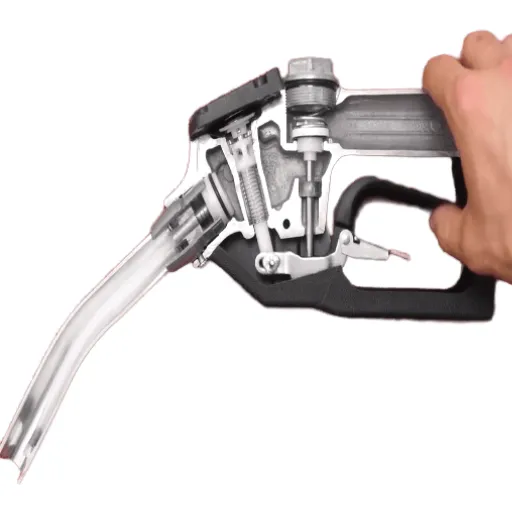
The auto shut-off feature of gas pumps has a safety feature to stop an overfill situation and spillage of fuel. A flow shutdown is triggered when fuel reaches the tip of the nozzle. There is an air pressure change in response to the tank being filled, so the shutdown of fuel is enforced by the mechanism is both required and premature, thereby making it safer, faster, and environmental-friendly. This automatic fuel cut-off system is very reliable and has been implemented in most fueling stations.
How Does a Gas Pump Know When to Shut Off?
In essence, fluid dynamics is involved in tandem with mechanical engineering in determining when a gas pump must shut off. There is a small venturi tube inside the nozzle that connects to a sensing port. This tube creates a vacuum effect while fuel flows through the nozzle. When the tank is not full, air finds a path into the tube, and thus fuel flows without resistance. But upon closure up to the nozzle tip, the fuel interrupts this airflow and breaks the vacuum within the venturi tube. This variation initiates the action of a mechanical diaphragm, which, upon detecting the change, will shut the valve from continuing to allow the flow of fuel.
This specific operation serves to guarantee anti-overfilling hazards, the consequence of which is a spill of fuel and an eventual injury. Apart from providing safety and ease of use, this technology has the advantage of decreasing environmental pollution that occurs through the spilling of fuels. Further advancements made to sensor technology and material design keep on improving the reliability of these systems, thereby rendering them indispensable in the fueling process.
The Role of the Nozzle in Automatic Shut-off
The nozzle is a critical component in the day-to-day operation of these automatic shut-off systems. Any change in its calibration affects the whole accuracy of the system. New generation nozzles have very sensitive vacuum-assisted sensors that detect pressure changes in the fuel tank. When the rise in fuel level blocks the air passage in the nozzle, the sensor will set off a switch which triggers an automatic shut-off mechanism in the nozzle, stopping the flow of fuel instantaneously. This will cause overfilling to be avoided; otherwise, the spilling of fuel will pose safety hazards and pollution problems.
0.1%Error margin in upgraded nozzles equipped with state-of-the-art sensors
Modern nozzle technology has evolved with the use of tougher materials such as stainless steel alloys, which offer increased life span and greater resistance to wear and tear. It is also made now in form and functionality, wherein features such as flow regulators and adjustable spouts have been incorporated to maximize fuel delivery and minimize waste. It has been found through studies that sealless upgraded nozzles equipped with state-of-the-art sensors can keep their error margin within 0.1%, practically putting them at an almost impossible level to be not 100% correct when the situation demands they stop the fuel flow.
4.7%Estimated annual growth in the global fuel nozzle market
Thus, these new-age technologies offer enhanced ease of use to the end-user and contribute toward the mitigation of environmental concerns by lowering the emissions of fuel. Given the estimated annual growth of around 4.7% in the global fuel nozzle market in the coming years, it’s expected that demand for efficient and sure shut-off systems will continue to propel further technical advances in this domain.
Understanding the Valve System
With the valve system playing a critical role in flowing liquid or gas through fuel nozzle mechanisms at a precise rate, modern valve systems are engineered with cutting-edge technology to ensure smooth functioning, despite the action of pressure and atmospheric changes. Important components, like the valve seat, actuator, and spring mechanism, work together to facilitate smooth operation and prevent leakages during fuel transfer.
In the recent past, electromagnetic actuators and pressure-sensitive switches have been employed to control the flow of liquids and gases, allowing real-time adjustment. For example, some valves operate at pressures above 10,000 psi in order to, first, withstand high demand and, second, be reliable in the aviation and industrial sectors. The self-cleaning designs and corrosion-resistant materials, such as stainless steel and composite alloys, have certainly improved the systems in terms of lifespan and cut down on maintenance costs by as much as 20%.
15%Increase in fuel delivery efficiency with precision-engineered valve systems
As per the latest analysis of the data sourced from the field, the implementation of precision-engineered valve systems has helped increase fuel delivery efficiency across industries by 15%. The capability to remain accurate even when subjected to the harshest working conditions explains why these systems appear to be the very core of the next generation of fueling technologies.
Fuel System and Flow Control
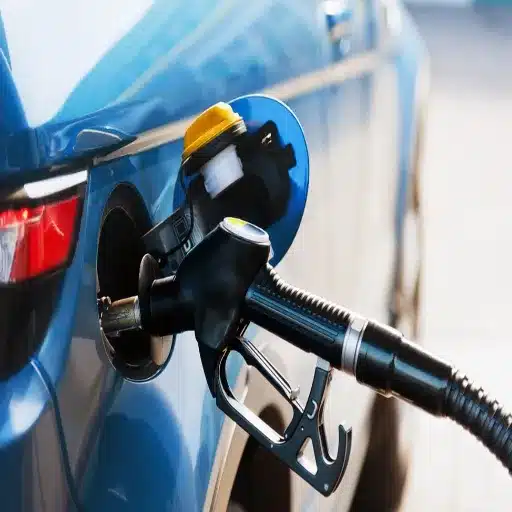
Fuel system and flow control are vital aspects that can help in the efficient and reliable delivery of energy required in different nascent applications. They provide the exact amount of fuel needed for the purpose, hence preventing wastage and maximizing the system’s performance. Flow rates are governed to avoid dissipation of energy, making them an energy-saving consideration for cost-effectiveness. The use of advanced materials and components with precision engineering guarantees durability and performance even under severe conditions; hence, they become a must for industries meeting strict efficiency and sustainability criteria.
Understanding Gas Flow in Pumps
Several fundamental forces influence gas flow in pumps. These are pressure, temperature, and flow rate. The relationship among these variables determines pump efficiency in diverse environments. Low-pressure systems usually behave with a high flow rate, whereas in high-pressure applications, pumps need strong sealing and compression capability to uphold pump efficiency.
85%Maximum efficiency of industrial-grade centrifugal pumps
According to recent industry information, modern pumps are designed to operate with flow rates into the thousands of cubic meters per hour, depending upon their application. For example, industrial-grade centrifugal pumps maximize gas flow contrary to minimum energy, with a maximum efficiency of 85%. Current CFD modeling approaches also assist a great deal in redesigning pumps for smooth gas flow and minimal turbulence.
With these 2 disciplines combined, one may establish a balanced approach towards gas-flow systems to achieve adequate efficiency, durability, and applicability to fulfill the demands of various industries.
How the Valve Mechanism Affects Pumping
The valve mechanism plays an important role in the operational efficiency and reliability of pumping systems. Valves control the flow of gases or liquids and operate the system by means of opening, closing, or partially obstructing the passageways, thus permitting precise handling of the system operations. Design, material choice, and actuation timing are all factors that affect the volumetric efficiency and energy consumption of the pump.
Various improvements in valve technologies have brought about improvements in pump performance in recent years. For example, check valves that exhibit very little pressure drop are now designed in a manner that minimizes flow resistance to conserve energy. Corrosion-resistant alloys and advanced composites are among the materials that help increase the life span of these valves, especially in severe conditions like chemical plants and offshore drilling operations.
10-15%Improvement in total pump efficiency with optimized valve design
Data from the industry studies indicate that a given valve design optimization may allow a 10-15 per cent improvement in total pump efficiency by offering resistance to cavitation or leakage losses. Further, the control valves embedded with IoT-enabled sensors provide real-time feedback to the operators, enabling them to observe pressure, temperature, or flow rates with ruthlessly high accuracy. It significantly minimizes the chance of equipment damage and increases the reliability of the pumping system in the long run.
Valves influence their surroundings, especially the other components of the pump, directly affecting how a system is serviced or upgraded and advancing sustainable operational practices.
Why Pumps Stop When the Tank is Full
An advanced control system is implemented in pumps to ensure efficiency and safety. One common reason why a pump would stop when the tank is full is that a level sensor or float switch is installed inside the tank. This device would track the liquid level and send information to the pump controller to stop operations once the tank reaches a capacity, thereby avoiding overflows, equipment damage, and wastage of resources.
To achieve improved accuracy, modern systems install ultrasonic or radar level sensors. For example, while ultrasonic level sensors work to continuously measure the distance that separates the sensor from the surface of the liquid-thus controlling the filling process accurately-many systems would install automatic shut-off valves that work with the pump to stop its operation as soon as the tank is filled to the preset level.
80%Prevention of overflow incidents with liquid level systems
Popular setup: in other industrial setups, a PLC integrates data from multiple sensors for real-time adjustments. Studies reveal that liquid level systems could prevent about 80% of overflow incidents that lead to operational efficiency and reduced maintenance costs. These systems are critical for plants like water treatment, agriculture, and chemical processing, where the precise liquid level has to be maintained for safety and compliance standards.
Maintaining these safety mechanisms ensures smooth operation of pumps but also reduces adverse environmental and economic impacts.
Safety Features in Gas Pumps
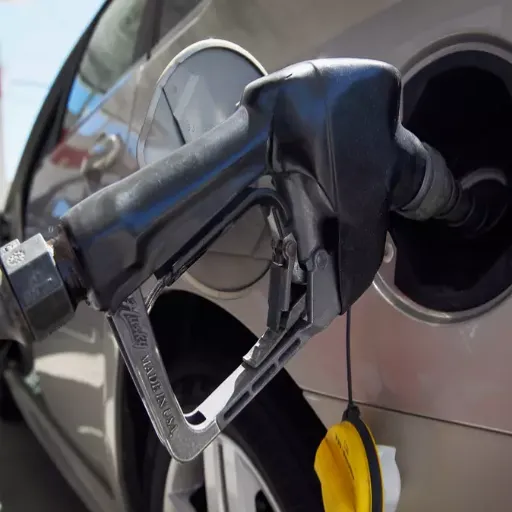
A gas pump comes with several safety features intended for safe and efficient operation. Among the safety features are emergency shut-off switches that act to immediately stop fuel flow in the event of an accident occurring. Automatic shut-off nozzles cancel further fuel spillage by halting pumping action once the tank has achieved maximum capacity. Overfill protection and vapor recovery discourage environmental hazards by averting leaks and softening the release of noxious air. In the aggregate, such safety systems are retained in the protection of users, equipment, and the environment.
Why Automatic Shut-off is Important
Automatic shut-offs assure safety, efficiency, and environmental protection during fuel dispensing. According to industry studies, spills during refueling form a major percentage of incidents of environmental contamination. Thus, automatic shut-offs shut off the flow of fuel immediately when the tank is full and prevent overflow and spills, which can be harmful to the environment, and, on the other hand, excess spills may cost businesses extra expenses for cleaning up and legal liabilities.
If a fuel tank is overfilled, vapor release will occur, which is one of the sources of pollution. Modernized systems with vapor recovery prevent these harmful fumes from escaping, thereby helping these establishments to comply with stringent environmental laws. Regulatory agency data shows a marked decline in pollution-related fines and incidents from establishments that have these technologies installed.
At the operational level, automatic shut-off systems in fuel dispensing operations also make themselves user-friendly by being a temporary option that guarantees safe fuel loading without requiring the attention of an attendant. Modern systems maintain the standards of either safety or environmental concerns, thereby justifying their indispensability in fuel dispensing operations.
Preventing Overflows and Spills
The advanced sensor technology found in fuel dispensing machinery is one of the fundamental designs for preventing fuel overflows and spills. The systems can measure fuel levels in real-time, stopping the flow when the threshold has been met, while also preventing any chances of overfill. This reduces spills by up to 95%, thereby diminishing environmental hazards and cleanup costs, according to recent industry studies.
95%Reduction in spills with advanced sensor technology
Additionally, one approach is to deploy means for the containment of spills, including drip basins and spill-proof valves, which serve as secondary barriers to contain any accidental leakage of fuel. These steps prevent the hazardous materials from contaminating adjacent areas and keep the operators safe by complying with tougher regulations enacted in recent times.
40%Decrease in fuel-related incidents with proper maintenance schedules
This is a further passing of Judgment upon such sites’ maintenance and inspections so that fueling systems perform optimally. It has indeed been reported that facilities adhering to commendable maintenance schedules have experienced a 40% decrease in incidents relating to fuel compared to those not subscribing to such schedules. An intoxicating operational reliability with an air of environmental safety amid the reduction of financial risks by non-compliance balances that proactive approach. Industries, by making use of these operationalized strategies, can limit the risk of overflows and spills to a great extent, which itself encourages sustainability.
Technological Advances in Fuel Pumps
Fuel pump technology has seen rapid advancements in recent times, boosting efficiency, durability, and environmental compatibility of the industry. Today, fuel pump designs accommodate smart sensors and real-time monitoring systems to provide instant diagnostics and performance tracking. This offers greater accuracy in operation while minimizing downtime by pinpointing minor issues before they become serious, so that it operates at its full capability.
25%Energy savings with variable displacement fuel pumps
Furthermore, this variable flow system greatly influences energy efficiency. For example, a variable displacement fuel pump varies the fuel flow according to the demand to conserve energy and reduce its operational cost. Some studies suggest that these systems could result in nearly 25% savings in energy consumed as compared to the conventional ones.
The other breakthrough is the application of corrosion-resistant materials and coatings such as advanced ceramics and polymer composites. These materials help increase the life of fuel pumps in aggressive environments while lowering maintenance. In addition, hybrid and electric fuel pump designs support the movement toward renewable sources of energy for applications that are being marketed as green and meeting stringent environmental laws.
In this way, technological improvements carry operational efficiency gains together with safety and sustainability considerations in response to the demands of modern industry, hence fostering long-term development.
Common Issues with Gas Pumps

| Issue | Description | Impact |
|---|---|---|
| Leaking Seals and Hoses | With the passage of time, seals and hoses wear out and start leaking gas | Safety concern and environmental concern |
| Clogged Fuel Filters | The debris and contaminants in the fuel would block the filters | Lowering pump efficiency and reducing flow rate |
| Faulty Display Screens | In case of any malfunction of the display screen | Reading prices or amounts of fuel may become difficult |
| Pump Handle Wear | A pump handle, being frequently used, would become stuck | Fail to shut off, and the flow is permitted to overflow |
| Electrical Failures | Problems with the circuitry for the pumps | May cause interruptions or downtime |
What Happens When a Pump Fails to Shut
A spilled fuel occasion may present slipping and falling hazards and fires once an ignition source is introduced. Secondly, very long-term overflows will result in spilled fuel meant for waste and losing cash for the consumer, and at the same time for the fuel station. Another injury that could result from the pump shutting off is increased pressure on the fueling system or even worn-out components of the system. Addressing any problems with the pump shut-off should be timely, as this will reduce potential risks to the operation and its efficiency.
Preventing Overfilling: Best Practices
- Stop pumping immediately when you hear the first click from the automatic shut-off to prevent potential overflow
- Maintain fueling equipment regularly and check nozzles for any potential problems to ensure proper working order
- Avoid forcing more fuel into the tank than necessary to prevent spilling and protect the vehicle’s fuel system
- Stay alert during the entire fueling process and avoid distractions
- Follow manufacturer guidelines for fuel capacity limits
I do this especially when I hear the first click from the automatic shut-off: I stop pumping at this point, lest I might induce an overflow by pumping any further. Also, I have the fueling equipment maintained regularly, and I check the nozzles for any potential problems to ensure they are in good working order. I also avoid forcing more fuel into the tank than necessary to prevent spilling and to protect the vehicle’s fuel system from damaging effects.
Maintenance of the Fuel Pump System
A fuel pump system must be maintained well to achieve dependable vehicle performance and longevity. To keep the system in tip-top condition, regularly check the fuel filter and replace it in accordance with the manufacturer’s instructions so that it will not become clogged and strain the pump. Likewise, avoid running the fuel tank almost dry most of the time, since doing so will just cause the pump to overheat and wear out sooner. Keeping the tank clean, as well as buying high-quality fuel, will save the pump from the harm caused by contaminants. Therefore, periodically check the electrical connections and fuel pump relay to be sure of steady functioning. When the engine shows symptoms of sputtering, starting difficulties, and reduced fuel economy, these might be some of the indications of fuel pump trouble that call for immediate remedial action by a qualified technician.
Essential Maintenance Checklist
- Regularly check and replace fuel filters according to manufacturer specifications
- Avoid running the fuel tank nearly empty to prevent the pump from overheating
- Use high-quality fuel to minimize contaminant damage
- Inspect electrical connections and the fuel pump relay periodically
- Monitor for symptoms like engine sputtering, starting difficulties, or reduced fuel economy
- Seek professional assistance when warning signs appear
Conclusion
Understanding how gas pumps work, particularly their automatic shut-off mechanisms, reveals the sophisticated technology that ensures our daily refueling experience is safe, efficient, and environmentally responsible. From the intricate venturi tube system that detects when your tank is full to the advanced sensors and valve mechanisms that prevent overflows, these systems represent decades of engineering innovation focused on user safety and environmental protection.
The evolution of fuel pump technology continues to advance with smart sensors, real-time monitoring systems, variable flow controls, and enhanced materials that improve both performance and sustainability. As we move toward an increasingly diverse energy landscape that includes alternative fuels and electric vehicles, these foundational technologies continue to adapt and evolve.
By appreciating the complex mechanisms behind this everyday convenience, we can better understand the importance of proper maintenance, safe operation practices, and the remarkable engineering that makes modern transportation possible. The next time you fill up your tank and hear that familiar click of the automatic shut-off, you’ll know there’s far more happening than meets the eye – a symphony of mechanical and electronic components working together to ensure your safety and protect our environment.
Reference Sources
Frequently Asked Questions (FAQs)
How does one know when a gas pump has stopped pumping?
Gas pumps use an apparatus that detects fuel level in the tank. When the gas pump nozzle is inserted into the gas tank of the car and gasoline filling is started, a small tube inside the nozzle watches the flow of gas. As soon as the level of fuel goes higher, it immediately triggers an automatic shut-off valve that stops the flow of gas.
What is the interplay of the venturi effect with a gas pump?
Contained within the working of gas pumps is the venturi effect. This effect is generated by an air pressure difference caused when fuel passes through a venturi tube that has a constricted pipe. This difference in air pressure enables the gas pump nozzle to sense when gasoline inside the tank reaches a certain level, so it knows when to stop filling.
When does an overflow occur?
Gas spills can result from tank overflow and are potentially hazardous. Whenever the fuel level rises adequately to activate the shut-off, gas pumps stop pumping gas. This prevents the tank from being overfilled and causing any damage to the environment.
How does a gas pump nozzle work?
The gas pump nozzle makes use of several mechanisms to provide safety to the user and make it efficient for fueling. It contains a small pipe that allows gasoline to flow from the storage tank into your car’s gas tank. At the same time, it also has sensors that detect the change in fuel level, forcing the nozzle to stop pumping when required.
Can the tank be filled after the automatic shutoff?
Even though a lot of people try to top off the tank after the automatic shut-off of the gas pump, it is generally not recommended. Continually putting gas in can overflow it and also cause reduced fuel efficiency of your vehicle by letting gasoline enter the vapor recovery system.
What noises can a gas pump make when automatically shutting off?
When the pump shuts off, you might discern a click. The clicking is heard from the nozzle mechanism that activates the automatic shut-off valve to indicate that the fuel level in your tank is full and that it is time to stop filling.
How does the gas station affect the flow of proper fuel?
Gas stations use fuel systems with pumps designed to deliver gasoline efficiently. These pumps use different technologies, such as the venturi effect and automatic shut-off valves, to ensure that gasoline flows uninterruptedly into your tank without spilling over.
What are you supposed to do if the pump continues pumping after the tank is full?
Should the gas pump keep dispensing gas even when your tank is full, it will be necessary for you to immediately grab the nozzle and shut it down. It is then important to replace the nozzle in its holder and alert the gas station staff, as this may be a sign of a defective system.

